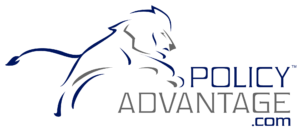It’s a “Risk-On” World: The Strategic Imperative of Insurance for Enterprises and Multinational Companies
Introduction
In the fast-paced and interconnected landscape of today’s business world, enterprises, multinational corporations, and businesses are continually navigating a multitude of risks that have the potential to disrupt operations and financial stability. From cyber threats and natural catastrophes to regulatory changes and market developments, the contemporary business environment is undeniably a “risk-on” world. In this context, insurance emerges as a crucial ally, providing a safeguard against unforeseen challenges and offering a strategic advantage for enterprises to thrive amidst uncertainties.
The Expanding Spectrum of Risks:
- Cyber Incidents: In an era dominated by technology, the specter of cyber incidents poses a substantial threat. Robust insurance coverage not only mitigates financial losses but also fosters a sense of security in the face of evolving cyber threats.
- Business Interruptions: From natural disasters to supply chain disruptions, the potential for business interruptions is ever-present. Insurance acts as a lifeline, offering financial support to enterprises striving to maintain operational resilience in the aftermath of unforeseen disruptions.
- Natural Catastrophes: Climate change has elevated the frequency and severity of natural catastrophes. Enterprises equipped with comprehensive insurance coverage can not only recover from the impact of events like hurricanes and wildfires but also proactively build resilience against future environmental challenges.
- Regulatory Changes: Constant shifts in regulations demand adaptability from businesses. Insurance provides a strategic cushion, allowing enterprises to embrace regulatory changes without compromising financial stability.
- Macroeconomic Developments: Economic uncertainties and geopolitical events can have profound implications for businesses on a global scale. Insurance becomes a strategic asset, empowering enterprises to navigate the complexities of macroeconomic developments and market fluctuations.
- Fire/Explosion: Unforeseen industrial accidents can result in property damage and business disruptions. Insurance coverage for fire and explosion risks ensures enterprises can recover swiftly and strategically, minimizing the impact on their long-term success.
- Climate Change: The escalating impact of climate change introduces a new set of challenges. Insurance not only aids businesses in adapting to climate-related risks but also positions them strategically as responsible and resilient entities in the eyes of stakeholders.
- Political Risks and Violence: Operating in diverse global markets exposes businesses to political risks. Insurance policies covering political risk strategically shield enterprises from the uncertainties associated with geopolitical challenges, fostering stability in their global pursuits.
- Market Developments: Rapid shifts in market dynamics necessitate agility from businesses. Insurance provides a strategic safety net, enabling enterprises to pivot strategically in response to changing market conditions without jeopardizing their overall strategic goals.
- Shortage of Skilled Workforce: The scarcity of skilled labor is an ongoing challenge. Insurance emerges as a strategic tool for enterprises, allowing them to attract and retain talent through competitive employee benefits, ultimately strengthening their workforce strategy.
The Strategic Importance of a Strong Relationship with an Insurance Agency
Building and nurturing a robust relationship with a quality insurance agency is not merely a tactical move but a strategic imperative for enterprises and multinational businesses facing diverse risks. Here’s why:
- Tailored Strategic Coverage: A trusted insurance agency, with its expertise, can assess the strategic risks unique to a business and craft tailored coverage that aligns with the overall strategic goals of the enterprise.
- Strategic Risk Mitigation: Insurance agencies offer more than just coverage; they provide strategic insights and risk mitigation strategies, enabling businesses to proactively address potential threats and fortify their overall strategic position.
- Strategic Claims Support: In the event of a covered loss, a strong relationship with an insurance agency ensures swift and strategic claims processing. This minimizes the impact on business operations, allowing enterprises to resume strategic activities without prolonged disruptions.
- Strategic Adaptability to Changing Needs: As businesses evolve strategically, so do their risk profiles. A close partnership with a quality insurance agency allows for ongoing strategic assessment and adjustments to coverage, ensuring continued relevance and effectiveness in the face of evolving strategic challenges.
Conclusion
In the face of a “risk-on” world, insurance not only emerges as a strategic necessity but as a key ally for enterprises, multinational corporations, and businesses striving for sustained success. From strategically safeguarding against cyber threats to strategically navigating the complexities of global markets, insurance provides the strategic security needed to thrive in an uncertain business environment. Cultivating a strong and strategic relationship with a reliable insurance agency is not just a matter of risk management; it is a strategic imperative, a cornerstone in building resilience, and ensuring sustained strategic success in the ever-changing landscape of today’s business world.
